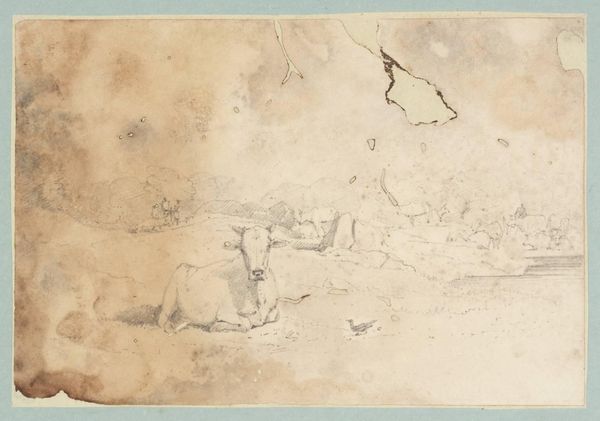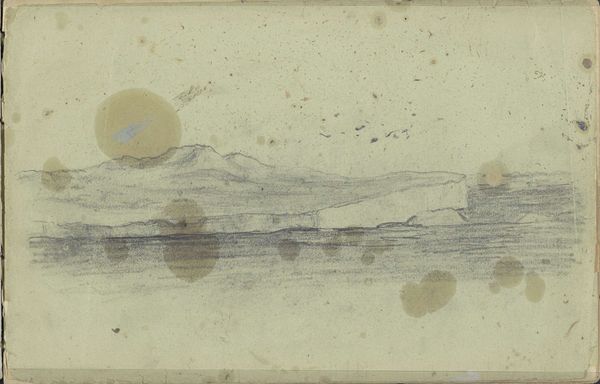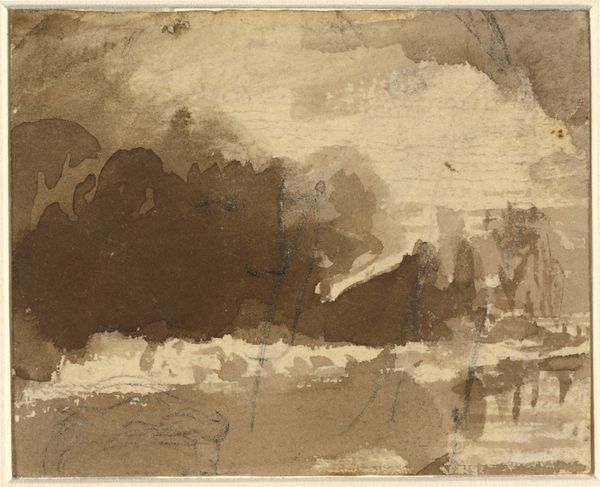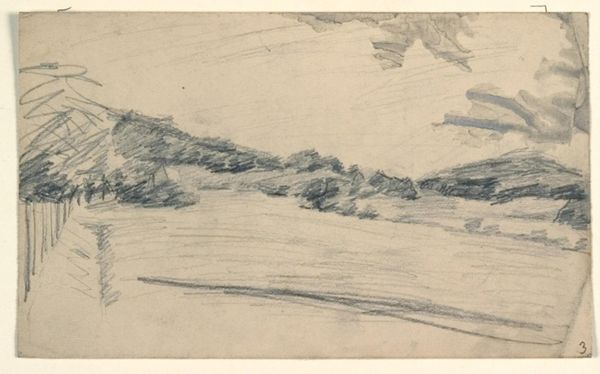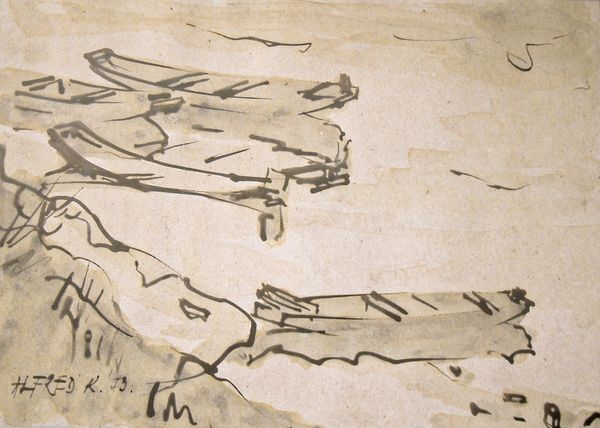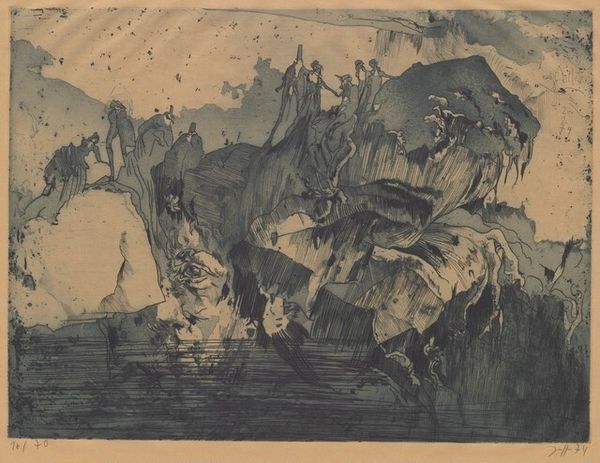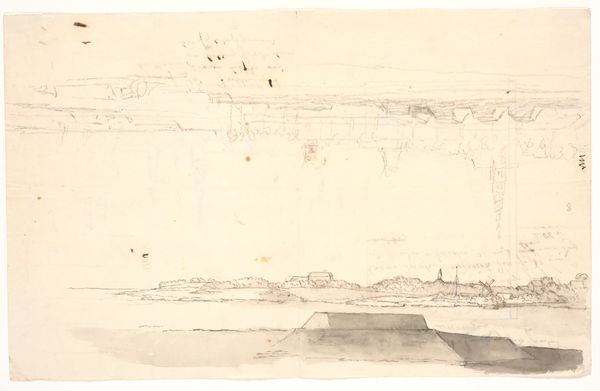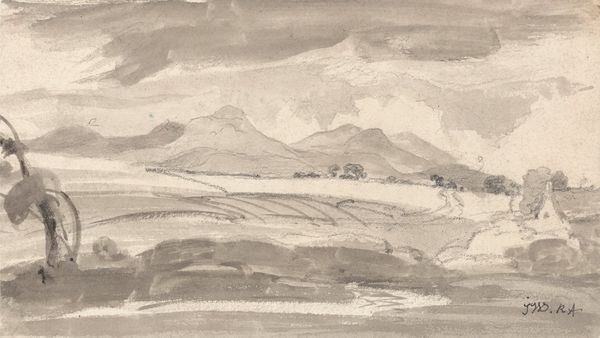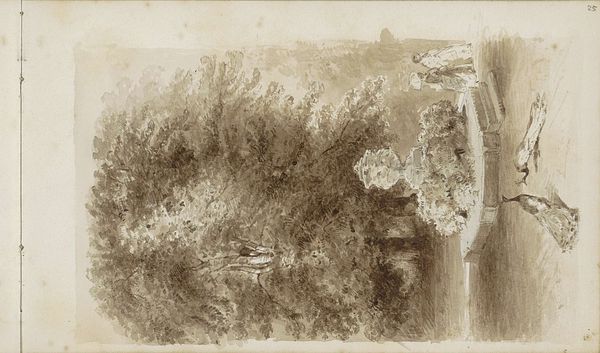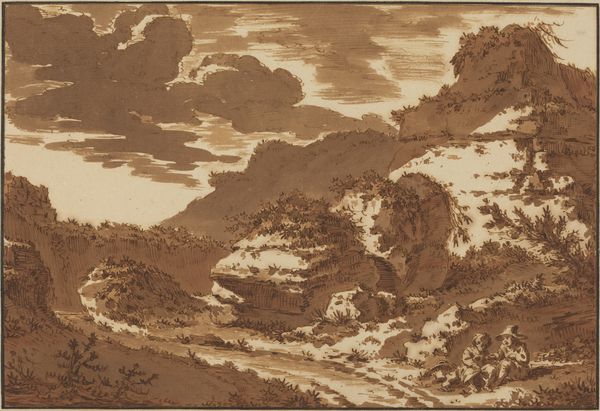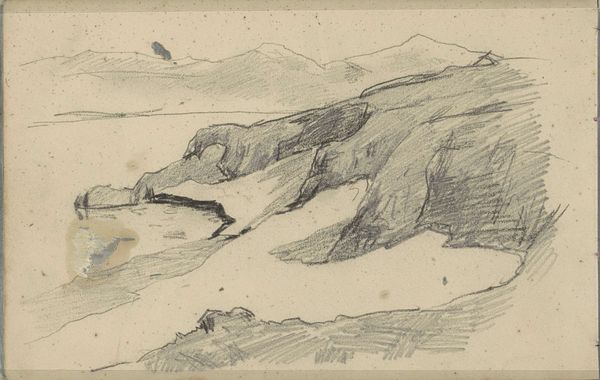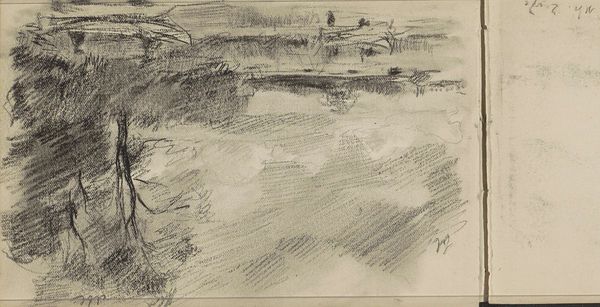
drawing, charcoal
#
drawing
#
landscape
#
charcoal drawing
#
romanticism
#
charcoal
#
watercolor
Copyright: Public Domain: Artvee
Curator: Here we have Eugène Delacroix's "Landscape with an Aqueduct," dating back to around 1827. Delacroix, the master of Romanticism. Editor: My initial impression is all fluidity and atmosphere. It's rendered in sepia tones that evoke a certain nostalgia, a distant memory perhaps. The aqueduct appears almost ghostly, hovering in the background. Curator: Exactly. It’s predominantly charcoal and watercolor. Imagine the relative ease and speed of this medium, quite contrasting to oil painting. These aren't definitive pronouncements of landscape, more like notations from a journey. You catch a sense of capturing fleeting impressions—the aqueduct like a skeletal remain of classical grandeur against the unbridled vista of nature. Editor: Indeed. And this relates to his practice overall, which moved from historical scenes towards explorations with landscapes—studies really, that gave Delacroix opportunity to try out new compositional and chromatic ideas later developed into monumental canvasses. What’s amazing here is the immediacy—we can imagine Delacroix observing and responding to his subject in real time. A conversation unfolds on paper. Curator: And perhaps he was grappling with a tension: nature versus human engineering? See how the organic shapes are loose compared to the straight architectural details in this idyllic composition? Was it maybe a personal rumination on change itself? Editor: Thinking materially, I wonder about Delacroix's choice of paper. Was it handmade, what kind of texture influenced these washes? Also, what kind of charcoal was used and how does that particular type inform the lines we see here. Was he grinding his own pigments for the sepia ink? It reminds me that landscape paintings are often silent narratives that engage us with history. We almost don’t think about how it shapes both environment and culture—land and aqueduct! Curator: Precisely. Delacroix wasn't merely recording what he saw. Instead he explored his emotional reactions, turning landscape into something truly sensational, even sublime. You feel the freedom with which he's laid down each wash, almost breathlessly. It reminds me to loosen the reins sometimes. Editor: For me it's the blend of intentionality with serendipity, or that it's so carefully made, from gathering raw materials to that final composition—Delacroix prompts us to ask: How is an image created? And, from where?
Comments
No comments
Be the first to comment and join the conversation on the ultimate creative platform.
